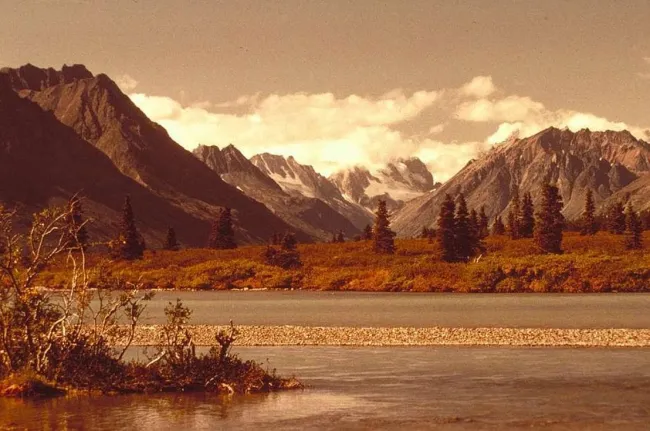
Lake Clark National Park and Preserve, located in south-central Alaska, is a remote and stunningly beautiful wilderness that offers visitors an unforgettable experience of rugged landscapes, glacial lakes, and volcanic peaks. Encompassing over 4 million acres, the park is a haven for outdoor enthusiasts, wildlife lovers, and those seeking solitude away from the hustle and bustle of modern life. With its pristine environment, Lake Clark offers a true Alaskan wilderness experience, providing opportunities for hiking, fishing, kayaking, and wildlife viewing.
History of the Park
The area that is now Lake Clark National Park and Preserve has long been a vital part of the lives of the native Dena'ina Athabascan people, who have lived in the region for thousands of years. Their deep connection to the land is still evident in the area today, as many of their traditional practices continue. In the modern era, the park was established in 1980 under the Alaska National Interest Lands Conservation Act, ensuring the protection of its unique landscapes, ecosystems, and cultural heritage.
Main Features
One of the most prominent features of Lake Clark National Park is its namesake, Lake Clark, a massive freshwater lake surrounded by mountains. The park is also home to two active volcanoes, Mount Redoubt and Mount Iliamna, which add to the dramatic scenery. Visitors will find an abundance of wildlife, including bears, moose, and various bird species. The park's rivers and lakes are popular for salmon fishing, while its coastlines offer stunning views of marine life, including seals and sea otters.
Types of Trails
Lake Clark National Park offers a variety of trails for hikers of different skill levels. Some of the most popular trails include:
- Tanalian Trails: A series of interconnected trails offering hikes of varying lengths and difficulty levels. These trails provide views of Lake Clark, Tanalian Falls, and Kontrashibuna Lake.
- Twin Lakes Trail: A challenging backcountry trail that rewards hikers with views of the park’s lakes and mountains.
- Tuxedni Bay Trail: A coastal trail offering opportunities for wildlife viewing and beachcombing.
Since the park is largely undeveloped, many of the trails are unmarked and require good navigation skills. Backcountry hiking is popular, but visitors must be prepared for remote conditions.
Crowd Expectations and Annual Visitors
Lake Clark National Park is one of the least visited national parks in the United States, receiving approximately 17,000 to 18,000 visitors annually. Due to its remote location and limited access, the park remains a quiet and uncrowded destination, perfect for those seeking solitude in nature.
Accessibility for Seniors
While the park’s remote and rugged terrain can present challenges for senior visitors, there are options for those seeking a more accessible experience. The Tanalian Trails near Port Alsworth are among the most accessible areas, offering relatively easy hikes with beautiful views. Guided tours and charter services can also accommodate seniors, ensuring they can enjoy the park’s highlights without the need for strenuous activity.
Accessibility for Wheelchairs
Unfortunately, Lake Clark National Park does not offer extensive wheelchair-accessible facilities due to its rugged terrain and undeveloped nature. However, the visitor center in Port Alsworth is wheelchair-accessible, and some guided tours may be able to accommodate visitors with mobility issues.
Park Amenities
Lake Clark National Park is a true wilderness destination, meaning amenities are limited. There are no roads leading into the park, and no restaurants, shops, or gas stations within the park boundaries. The visitor center in Port Alsworth provides information and exhibits about the park’s natural and cultural history. Visitors should be self-sufficient and bring their own supplies for their visit.
Camping Facilities
Camping in Lake Clark National Park is a remote and primitive experience. There are no developed campgrounds, and backcountry camping is the primary option for overnight stays. Campers must follow Leave No Trace principles, as the park is a pristine wilderness area. Permits are not required for camping, but visitors should check in with the park rangers for safety information and guidelines.
Access to Lodging
For those seeking a more comfortable stay, there are private lodges available in and around Port Alsworth. These lodges offer a range of services, including guided tours, fishing excursions, and wildlife viewing. Most visitors access the park by small plane, and many of the lodges offer transportation from Anchorage or other Alaskan towns.
Pet-Friendliness
Pets are allowed in Lake Clark National Park, but they must be kept on a leash at all times. Due to the presence of wildlife, including bears, pet owners should exercise caution and keep their pets under control. Pets are not allowed inside public buildings such as the visitor center.
Best Months to Visit
The best months to visit Lake Clark National Park are from June to September when the weather is more temperate, and the days are long. July and August are the warmest months, with temperatures ranging from the mid-50s to mid-60s Fahrenheit. Visitors should be prepared for variable weather, as conditions can change rapidly in Alaska.
Conclusion
Lake Clark National Park is a hidden gem in Alaska’s vast wilderness, offering an unparalleled experience for those looking to escape into nature. With its breathtaking landscapes, abundant wildlife, and opportunities for adventure, the park is a must-visit destination for outdoor enthusiasts. Though remote and rugged, it rewards visitors with peace, solitude, and the beauty of untouched wilderness. Whether you're hiking, fishing, or simply taking in the views, Lake Clark provides an unforgettable Alaskan experience.



